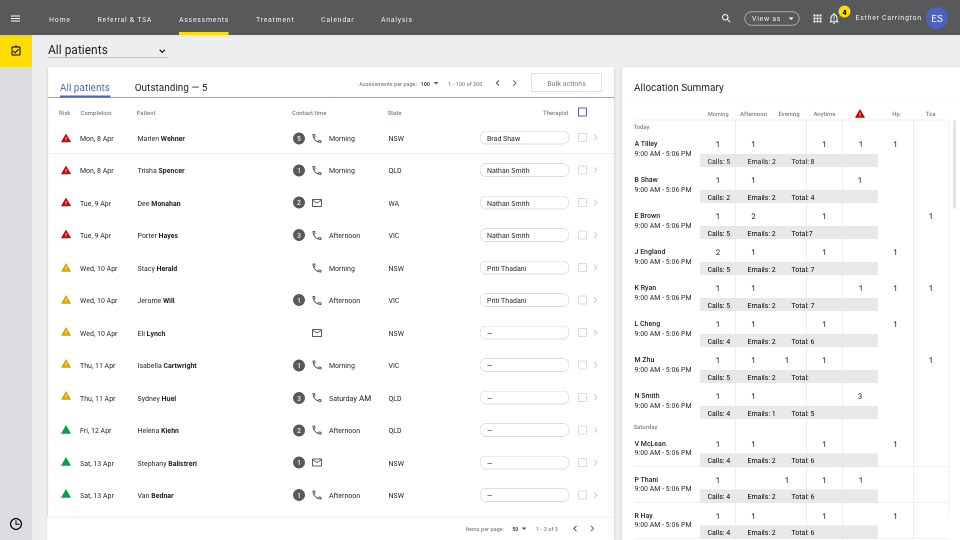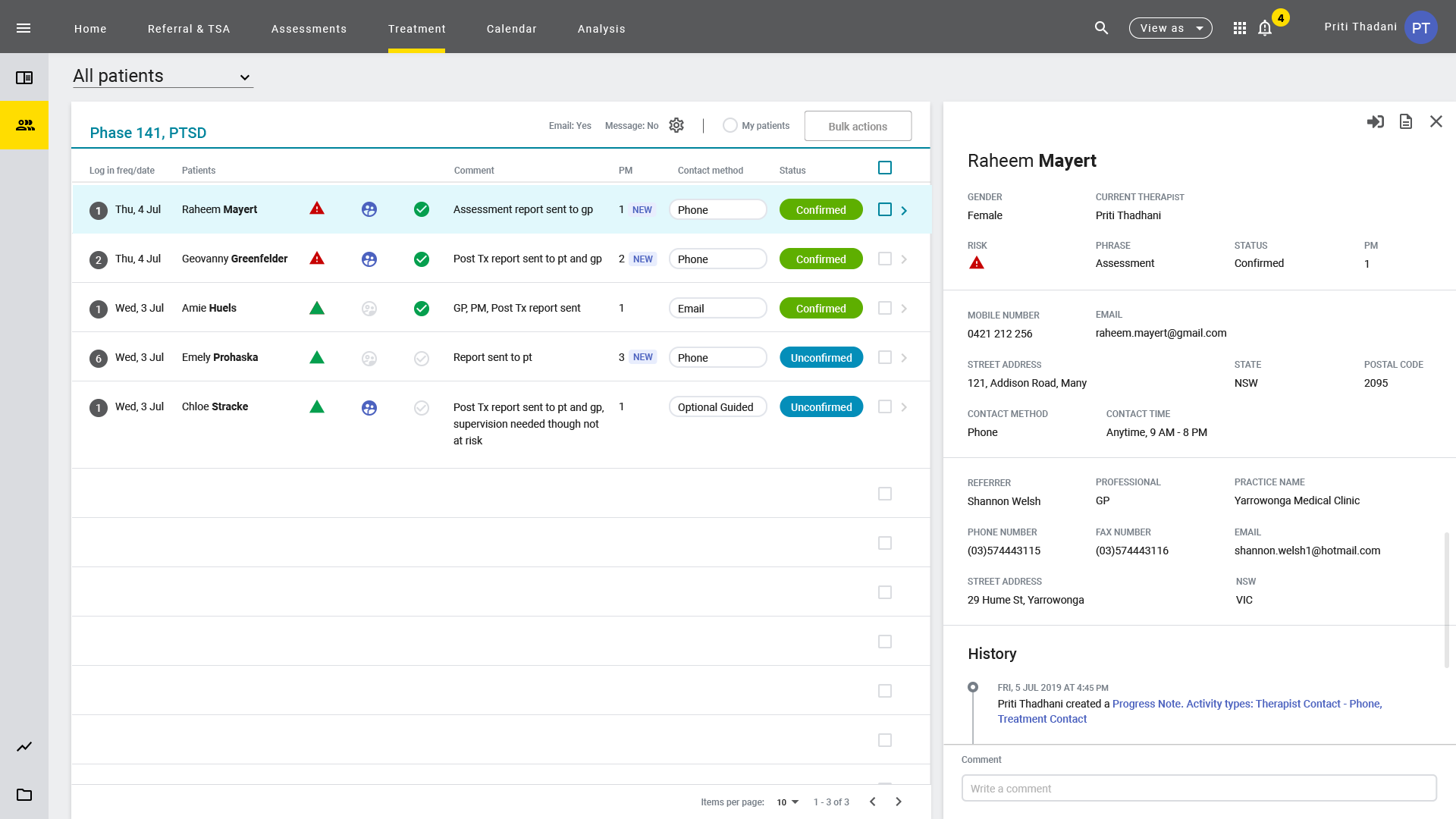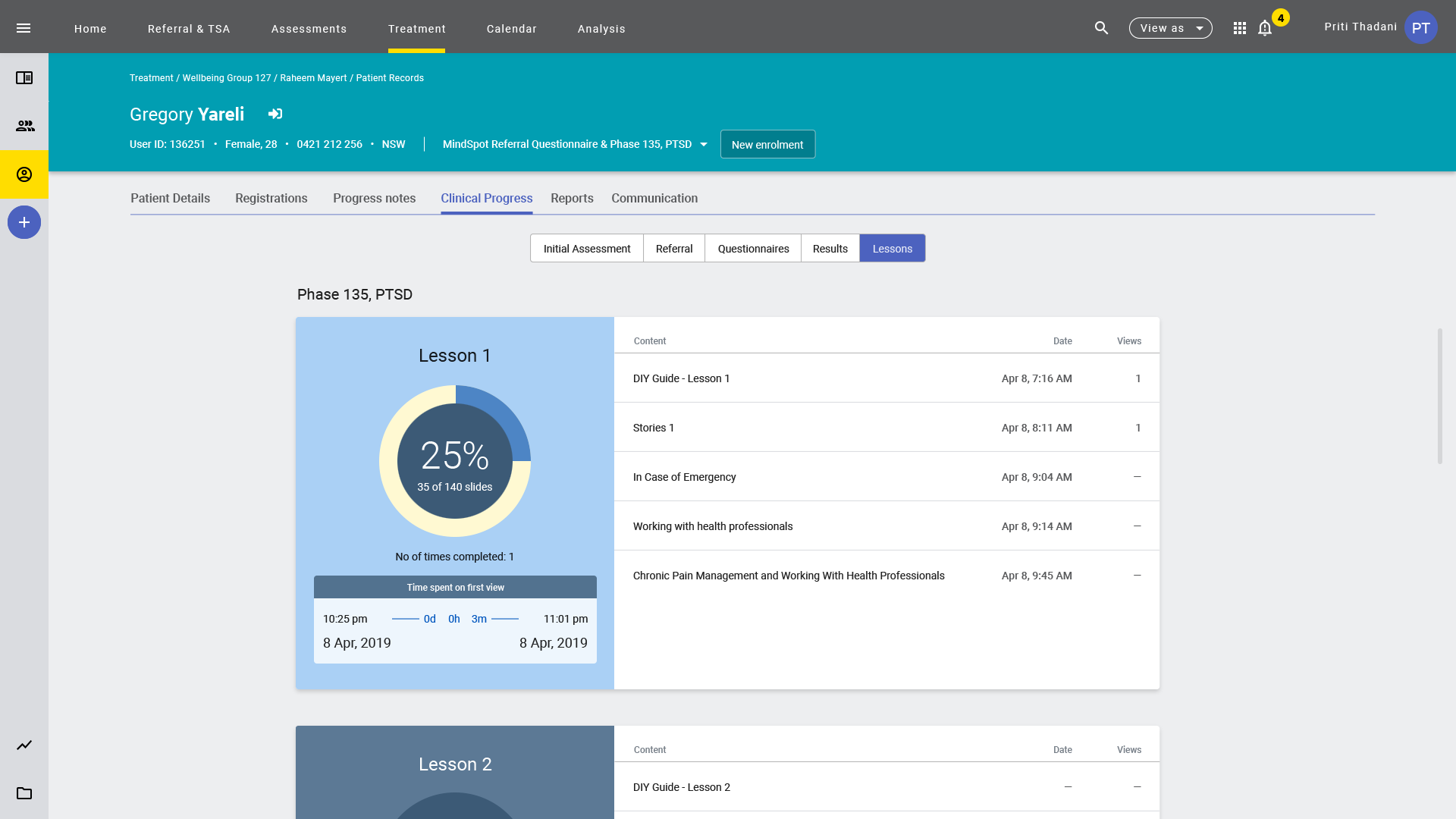MindSpot Clinician Platform
MindSpot provides a patient self-assessment platform, with follow-up treatment offered for people who may demonstrate symptoms of stress, anxiety, worry, depression, low mood, Obsessive Compulsive Disorder (OCD) and Post Traumatic Stress Disorder (PTSD). The platform provides assessments and courses - including for Indigenous Wellbeing - that patients can go through with the help of a psychotherapist.
In conjunction with the patient platform, Mental Health Therapists and Administrators were using a desktop application that enabled patient coordination and communication, collaboration and knowledge sharing. This application was redesigned based on a comprehensive user research carried out with Therapists and Administrators. The aim was to improve the workflow and empower them to work and collaborate efficiently thus reducing occupational stress; and to effectively attend to patients and priorities attendance (which were based on the results collated from self-assessments completed by patients ranging from the levels of critical conditions to severe to mild).
Userflow — Progress Notes
One of the key user feedback to the existing platform the Therapists were using was that they regularly had to switch between browser windows or two monitors to refer to previous patient’s progress notes when writing a new one while conversing to a patient on the phone. The new design took this into account — a split screen that allows Therapists to write a new progress note on the right panel while referring to history of a patient on the left panel.
User Problem
Complexity in the existing application’s information architecture, inconsistency of the navigation, hidden options, and clumsy UI mechanics resulted in inefficient workflows and work-around for the users.
Users expressed confusion and pain points that comes with the adoption of multiple disparate systems in order to complete tasks.
The Solution
User research was carried out to reveal problems experienced by the users. Tasks analysis and customer journeys helped inform on the redesign of information architecture.
Together with the team at Constant Consulting, we recreated and managed the clinician platform, a single application to replace the multiple systems from the users’ previous workflow.
The aim was to help Therapists and Administrators manage patient status, course status, reporting and progress monitoring of patients. Continuous integration and continuous delivery pipelines were implemented.
Key Processes
UX Plan
UX Research & Synthesis
Information Architecture
Wireframing and iterative design
User Interface
Design System
Material Design
Quasar Framework
Usability Tests
User Research Activities
Requirements and constraints gathering
Stakeholder interview
User in-depth interview
Contextual observation
Persona building
Task analysis
Journey mapping
Prototype feedback and testing
User stories
Usability tests
Personas building
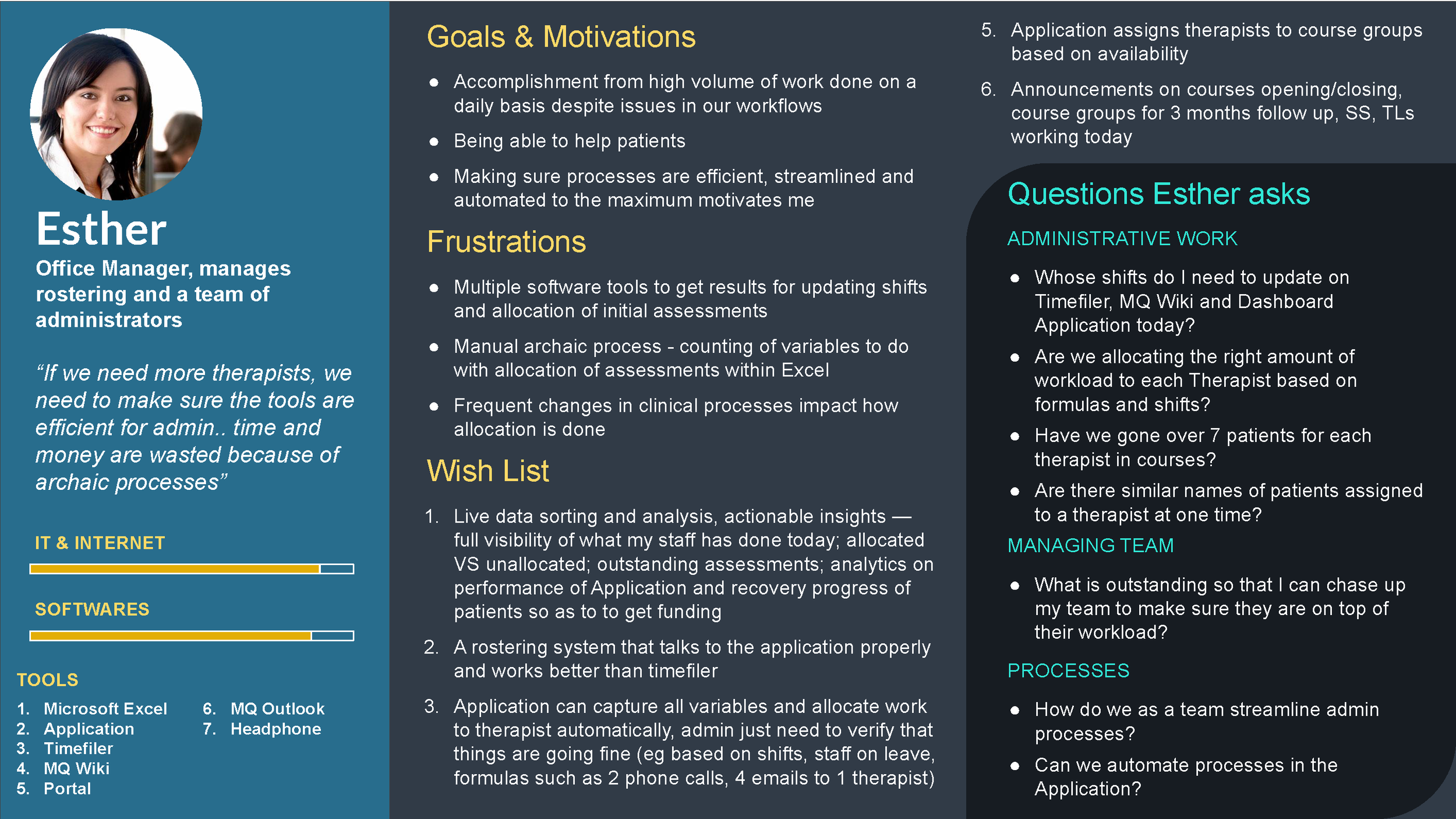
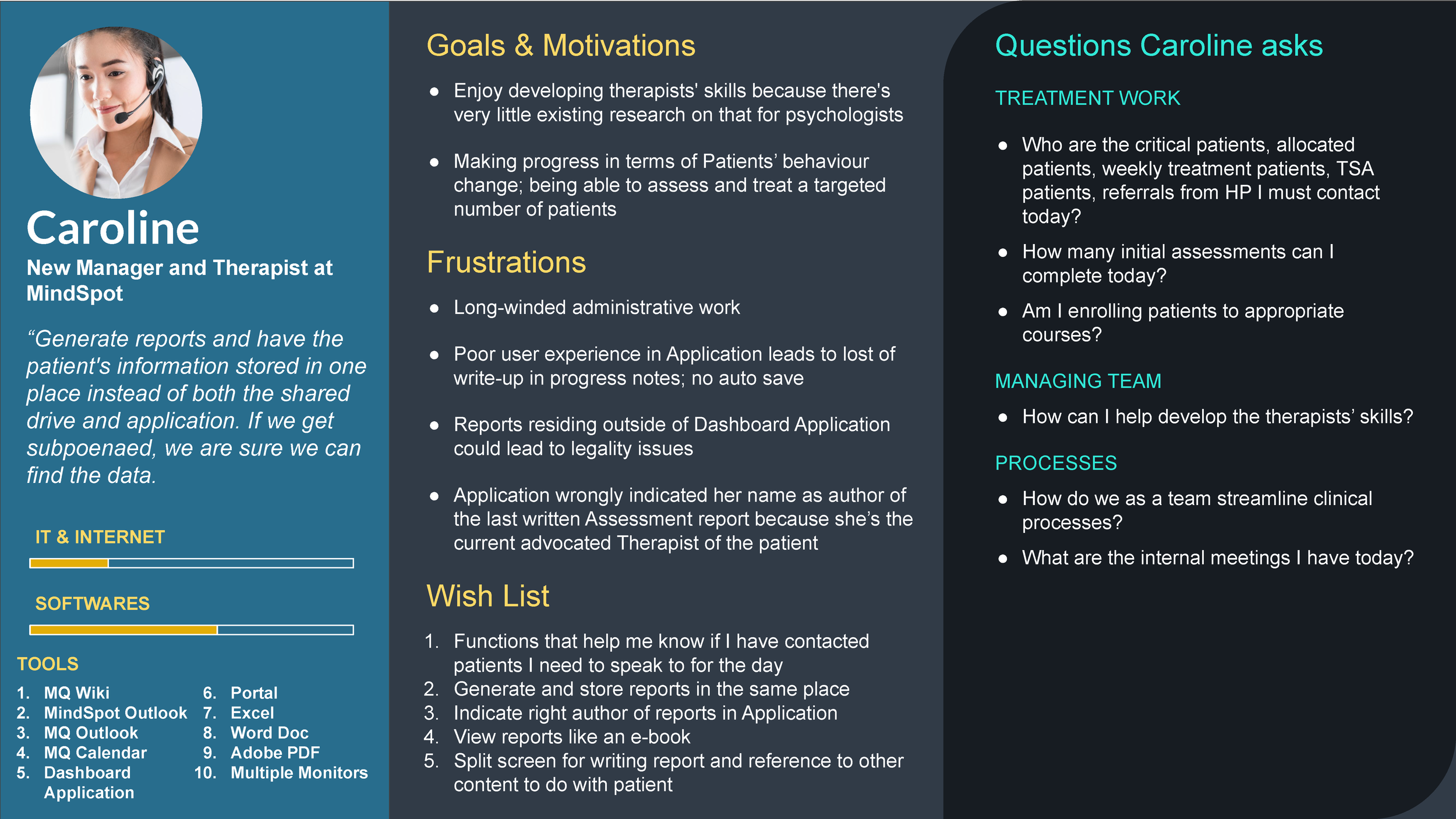
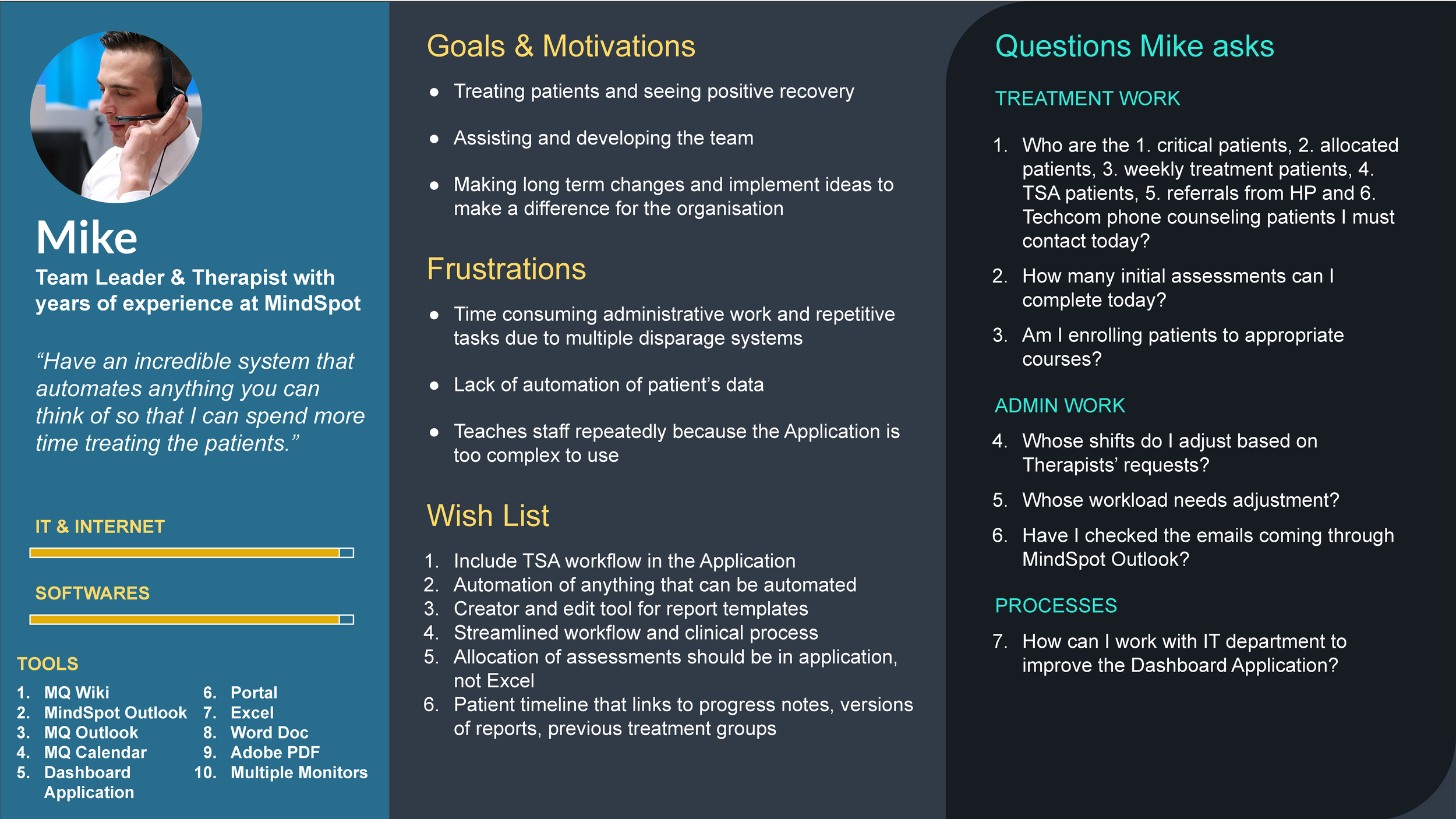
Task analysis and solution for Therapists
User Journeys

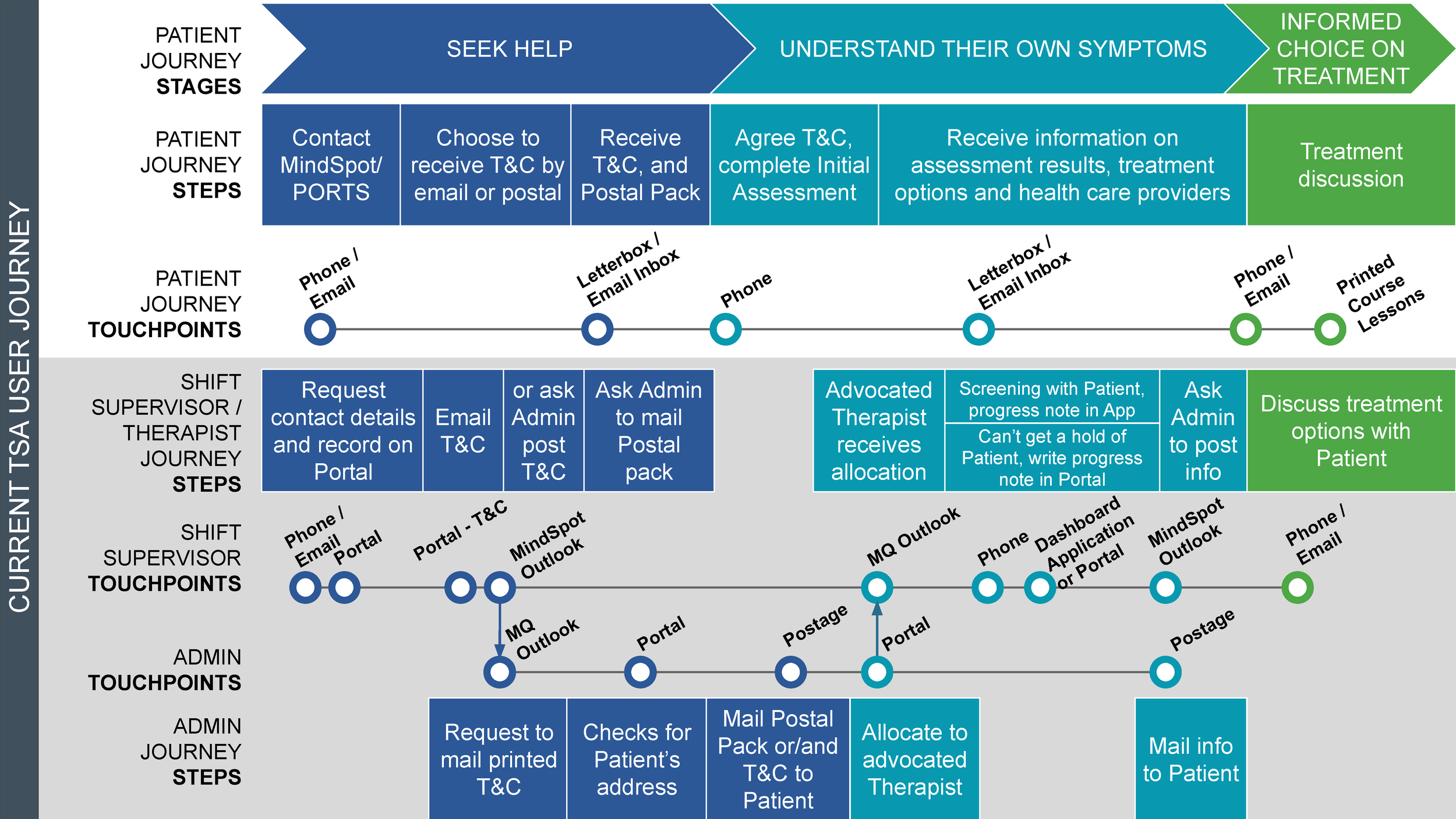
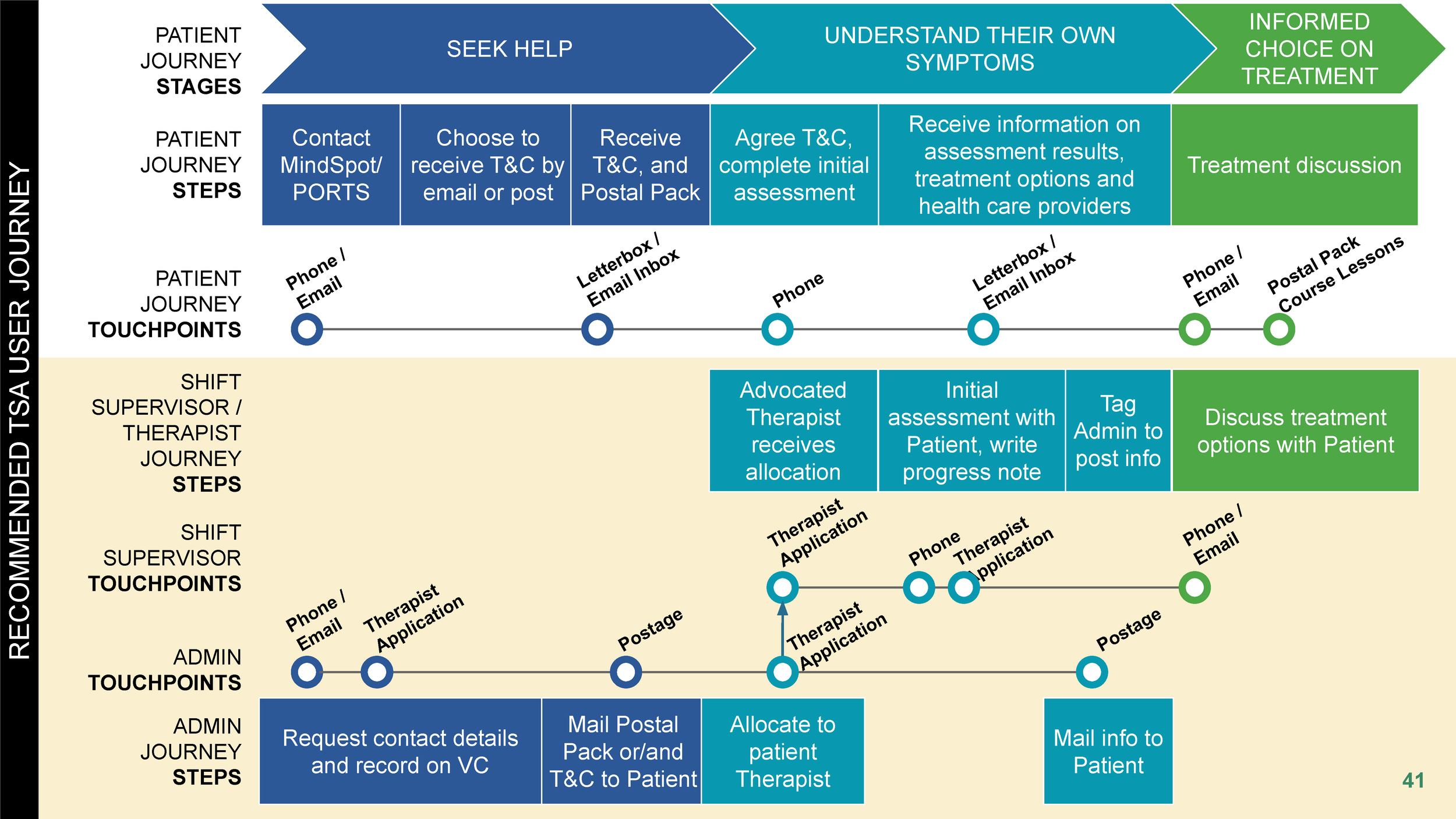
UX/UI Design
Information architecture
Wireframing
Final Interface Designs
